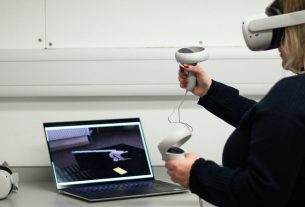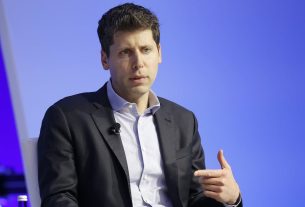|
Getting your Trinity Audio player ready...
|
Imagine you’re driving a Tesla to a public electric vehicle (EV) station to charge it. Now imagine that the station not only charges your vehicle efficiently and quickly but also produces its own power supply. It does not require connection to the power grid. The nano power plant incorporates a fuel cell at the EV station and an ammonia cracker that extracts hydrogen from green ammonia synthesized on-site as the source for the energy. You finish charging your vehicle and drive off with the process, including your vehicle, producing zero carbon emissions.
GenCell’s roots can be traced back to when two Israeli entrepreneurs – Gil Shavit, an electrical engineer; and Rami Reshef, a tech enthusiast with experience turning innovative ideas into mature products – met Dr. Gennadi Finkelshtain, a leading expert in fuel cell technology from the former Soviet Union, and decided to join forces. This fortuitous encounter led to the formation of the company. Driven by a shared vision, the three co-founded GenCell and embarked on a mission to revolutionize clean energy.
Shelli Zargary is an enthusiastic advocate of green energy. As GenCell’s communication strategist and climate tech evangelist, her role is to promote “technology accelerating the transition to a clean energy economy so we can stop the overheating of our world.”
In fact, within the first few minutes of our interview, she couldn’t overemphasize how global warming is the world’s biggest problem and how Israel has much that can contribute to solving it. “The Union of Concerned Scientists warned the world long ago that if we go past 2°C, we would be in big trouble. We have now passed 1.5°C. Everyone can see the impact of climate change around us: more frequent and severe storms,” she said. “We are regarded as the Start-Up Nation. Climate tech is no different. GenCell is an example of Israel’s effort to contribute creative and ingenious out-of-the-box solutions looking at climate tech problems.”
GenCell’s ingenuity: Making complex, expensive technology and for everyone
The ingenuity of GenCell has to do with the way it transformed what was once an expensive technology developed for the space program and the sole property of the world’s superpowers into something affordable and usable for terrestrial applications. One of GenCell’s first accomplishments was finding alternative metals to decrease costs. Zargary elaborated on the major difference: “Fuel cells use noble metals; most fuel cells use platinum in the fuel cells, which cost $26,000 a kilo. Our scientists were able to replace that with a compound using nickel that costs $26 a kilo.”
Hydrogen fuel cells at their core are electrochemical generators that produce electricity by combining hydrogen with oxygen from the air. This process generates electricity while emitting only water and heat, with no greenhouse gas emissions. Fuel cells are celebrated for their resilience and durability, making them ideal for various applications, even in the face of challenging environmental conditions. GenCell’s first commercial product, a 5 kW fuel cell designed for backup power, showcased the technology’s potential.
When it comes to power, and particularly backup power applications, most of the world relies on unclean diesel generators. The generators harm the environment twofold: by relying on diesel, which in itself creates a carbon footprint; and by needing to be turned to idle on occasion for proper maintenance. GenCell’s original innovation was to replace diesel generators with clean hydrogen-based fuel cells which produce much-reduced carbon emissions.
Since 2016, GenCell’s fuel cells have been used in 22 countries, offering a cleaner and more sustainable solution for backup power needs. By using hydrogen as the fuel source for backup power, GenCell not only helps reduce carbon emissions but also addresses the environmental impact of backup power generation.
Despite its initial success, hydrogen use isn’t without its dilemmas. As Zargary explained, “Hydrogen is very expensive. It is very complex to store. To refine and transport it is expensive. You need to compress it or cryogenically turn it into liquid hydrogen, which is an expensive process. So our scientists looked for a better way to power the fuel cells. Seeking a more efficient carrier of hydrogen, they looked to ammonia.”
Ammonia, a widely used chemical, serves as a second-generation carrier of hydrogen. GenCell’s next breakthrough was the development of an ammonia cracker, allowing for the extraction of hydrogen from ammonia on demand. When handled safely, ammonia poses minimal risks, with potential leaks contained within double-walled storage systems utilizing water. If the ammonia leaked, it would mix with water, becoming a harmless fertilizer, said Zargary.
Economizing the process by utilizing ammonia crackers, GenCell is creating backup and off-grid power products catering to the telecom market, and recently EV charging providers. The telecom market was a warm partnership from the beginning, as its stakeholders “are interested in being environmentally conscious, and their consumers are focused on these issues. Therefore, they are interested in operating their towers with clean fuel,” Zargary said.
The solution for EV charging was born from the problem of Israel’s limited ability to provide adequate power for EV charging stations and has developed into a broader hybrid solution that GenCell is marketing abroad. Both industries utilize remote devices that are powered by GenCell technology. Today, the solutions are fueled by hydrogen, and soon they will be able to extract hydrogen from the ammonia cracker. Looking ahead, the devices will utilize on-site green fuel generation to be powered over a long duration, leaving no carbon footprint.
The ultimate goal is green self-sufficiency (GreenFSG) which can produce green, carbon footprint-free ammonia where you need it. Then the cracker can extract hydrogen from the green ammonia to produce power on the spot, turning every fuel cell into a nano power plant. This at its core of the technology that GenCell brings to the world stage. “The technology supports the trend toward local microgrids in the energy sector, moving away from large centralized generation projects.” The nano power plants will make their own power on-site alongside the load, eliminating the whole transportation issue, Zargary explained.
In the world of green hydrogen production, Israel is uniquely situated in a region that is vast, sunny, and, until recently, lacking in development. The combination brings potential for partnership between Israel and its neighbors in the realms of science and technology, something that Zargary wanted to stress: “We are part of the Middle East region, and we see that throughout the Middle East there are huge opportunities where our neighbors such as Egypt, Jordan, and Saudi Arabia have a lot of space and sunshine, giving them huge potential for large-scale production of green hydrogen. Europe wants that hydrogen. They want to import that hydrogen. This is a great commercial opportunity for economies that to date have been underdeveloped, such as Africa. If you can utilize the abundant sun that’s available in Africa and the Middle East to produce green hydrogen or ammonia and export that to Europe, you are making that hydrogen much more available and economical. This will make it easier for GenCell to offer our solutions in these countries. There are many places in remote areas in the Middle East and sub-Saharan Africa that lack stable energy and depend on diesel. These places can use GenCell equipment to obtain local clean energy generated from the same green hydrogen that is to be exported to Europe.”
The process began at the COP27 conference in Sharm el-Sheikh, which focused on leveraging resources in the Middle East to accelerate the transition to a clean energy economy. At present, the world views the Middle East as the source of OPEC; but, as Zargary noted, as these countries are so highly focused on the energy market, they are the most aware of and involved in the necessary transition to renewables. Participating in a hydrogen conference in Dubai last year, she saw first-hand innovations and projects from OPEC countries showing an interest in transitioning from oil and gas to green energy. “Both public and private organizations are making a real concerted effort to promote the transition, and that is good to see,” she said.
GenCell recently joined the Hydrogen Egypt Association, which is focused on regional collaboration. Egypt was the first country to sign a memorandum of understanding with the EU to supply green hydrogen, which provides fertile ground to form partnerships.
For Israel and GenCell, the upcoming COP28 conference in Dubai is an opportunity to continue to take advantage of hydrogen as a tool to collaborate with its neighbors. “We have very complementary interests,” Zargary said. “Israeli start-ups are developing hydrogen technologies that can be used in MENA projects leveraging the abundant sun and wind resources available there for producing green hydrogen. They have the sun, as well as the space that Israel lacks.” As land in Israel is scarce, the land within Israel used for solar PV power generation is first and foremost intended for direct production of clean electricity to increase the country’s very low proportion of renewable energy in our energy mix.
The COP28 conference will create the framework to forge new partnerships with other companies, regulators, and policy makers around the world to coordinate and share ideas. Especially for GenCell, the desire is to leverage hydrogen as a bridge to economic collaboration.
“We have a lot of interest to work in the UAE, both to build a local market there for our products and for export to the Far East, expanding our global presence,” Zargary said, explaining that COP 28 will be looking closely at the role of hydrogen in the energy sector and how it can be expanded to accelerate the transition to renewables.
Moreover, GenCell plans to showcase its innovative EV charging technology which enables green, grid-independent EV charging in places where grid power may not be sufficient.
“We established a joint venture with an EV company to develop a solution that leverages our hydrogen fuel cells to charge the EV chargers when other power sources are not available,” Zargary said. “It is both a complementary and supplementary power solution, aimed at resolving the issue of EV drivers’ range anxiety. The amount of energy required to charge an electric car, especially with fast charging, is substantial; the more we exponentially increase the number of electric cars – in Israel and in other countries – chargers need more power, and more broadly distributed wherever the EVs drive. So we brought this product into the market. We see a huge market in California and across the US. The Biden administration’s energy policies are very pro-hydrogen and also offer incentives for EV charging programs. Zero-emission transportation is, of course, also a topic on the agenda at COP28, one we are also exploring with our regional partners.”
With climate change issues having increasing impact around the world, Zargary expressed pride that Israel is a pioneer in developing innovative solutions by tackling these global issues. As it prepares to participate in COP 28, GenCell remains optimistic about its increased ability to form global partnerships.
“The conference offers an opportunity to showcase our clean energy solutions and work together with stakeholders from around the world to accelerate progress in combating climate change,” she said. “GenCell is not just a beacon of innovation but also a testament to Israel’s capacity to contribute creative solutions to global challenges, reaffirming that even though we are a small nation, we can make a significant positive impact on the global stage.” ■


